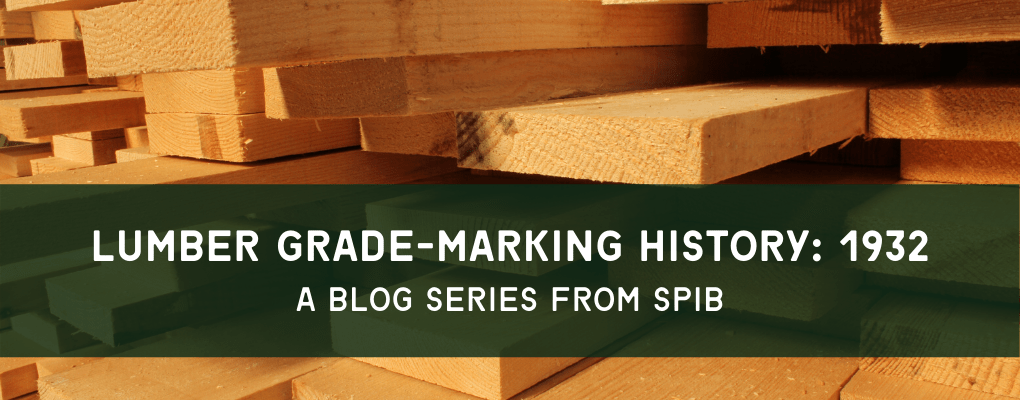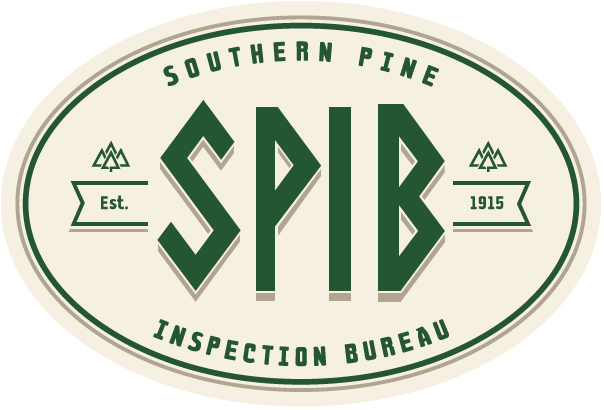
Lumber Grade-Marking History: 1932
Introduction
On January 1, 1932, the United States Post Office issued a series of stamps to commemorate one of the most important anniversaries in the history of the country – the 200th anniversary of George Washington’s birth.
Just a week or so later, on January 12, Hattie W. Caraway made history by becoming the first woman ever elected to the United States Senate. Though these two events had absolutely no impact on one another, it’s difficult to argue against the idea that the former would have been very, very proud of the latter.
In a larger sense, the country was still battling the impact of the Great Depression – and this was particularly evident across the lumber industry. These depressed economic conditions – coupled with the efforts of certain types of middlemen to create grade substitution opportunities and to evade quality and grade-marked lumber use – gave way to a series of dramatic changes in specifications and regulations in federal purchasing departments, state highway departments and other offices writing inquiries for lumber.
A lack of vigilance gave way to the rise of these middlemen, and the entire industry was made to suffer from it.
During the course of the year a tremendous amount of low grade, poor quality had been delivered into the possession of buyers – a situation that was quickly coming to a head. Something had to be done and something had to be done SOON – particularly in the wake of attacks against the SPA inspection department.
But what was the ultimate result of this strife and turmoil? Read on to find out.
1932
Depressed economic conditions and more particularly the efforts of certain types of middlemen to create grade substitution opportunities and to evade quality and grade-marked lumber use for the purpose of obtaining business on a price basis, caused changes in specifications or regulations in federal purchasing departments, state highway departments, and other offices writing inquiries for lumber. These middlemen, by reason of a laxity of vigilance in the purchasing offices for the use of grade-marked lumber, took advantage of the poor times and, to a degree, destroyed previous constructive work in favor of quality lumber, in order to make lumber sales on a price basis. This resulted in many millions of feet of lumber being delivered against contracts of loose specifications; grade substitution developed and the buyer discovered that the lumber was not what he wanted. The situation analyzed to the point of concluding that the weakness, permitting grade substitution and quality evasion, was largely found in the failure of the specification writer to protect himself by the use of the proper vehicle of the southern pine industry – the inspection department of the Southern Pine Association. SPA trade promotion work, directly applied in the territories where attacks on quality lumber were made by lumber salesmen seeking orders, was declared necessary for correction of the condition.
The lumber business was depressed – so were other branches of industry – by reason of national and world economic conditions. So large an amount of low grade, poor quality, lumber had been delivered into consuming buyers possession during the past three years that the buying public generally believed good lumber was no longer attainable. Attacks were being made on the SPA inspection department. Grade substitutions were frequently taking place. The SPA subscribers declared that they were not going to permit continuance of loosely written specifications, evasion of official inspection service, the nullification of grading rules and the substitution of qualities of lumber which should not be used. The following resolution developed:
…the primary aim of the trade promotion department will be to serve the special purpose of promoting the use of standard grades of southern pine, siding in the writing of specifications in cases where obscurity might lead to substitution, and not only for the maintenance, but for the up-building of our inspection department; and,
…there are frequent misinterpretations or misconstruction of the grades and species when applied to conditions of actual use; and,
…the presentations of their own recommendations by those engaged in selling lumber will lack uniformity and will not receive from architects, engineers and purchasing agents the consideration they should; and, engineers and purchasing agents the consideration they should; and,
…it is the duty of southern pine manufacturers to establish and promote uniform recommendations for their species and grades in the various uses to which they may be put; and,
…every sales manager should have at hand a uniform tabulation of such recommended species-grade-uses open to change when necessary or when additional uses require; and,
…it is believed necessary that such uniformity of species-grade-uses be promulgated by the Southern Pine Association in order that they may obtain ready acceptance on the part of specifiers and buyers;
…that the President of the Southern Pine Association appoint a special standing committee at an early moment, composed of nine members, three representing longleaf, three representing shortleaf, and three who shall represent operations outing both species, which committee shall study the species and grades, treated or untreated, which should be specified for as many uses as can be developed from time to time, and act as guide and mentor to the trade promotion department in all matters relating to species-grade-use recommendations.
A reduction in the schedule of charges for certificate inspections at the mills of both subscribers and non-subscribers were affected – to create and maintain a more friendly attitude by specifiers toward southern pine grades and to increase use of the service for the protection of the interest of southern pine lumber and timber.

(a) If official grade-marking is also required, add $1.00 per M on lumber originating at non-subscriber mills.
(b) These represent the usual quantities of the various sizes that can be inspected in a day, as reflected from past experience of the Inspection Department. If more than a day should be required to inspect material falling within these limits, an extra $15.00 for each additional day will be added to the flat charge per M. When quantities in excess of these minima are involved, the association will indicate the number of days it should take, and the flat charge per M will apply to the total quantity if inspected within the specified time. For each day beyond the time fixed an extra charge of $15.00, over and above the flat amount per M feet, will be assessed.
The Southern Pine Association was similarly given authority to negotiate with large buying groups, including railroads and state highway departments, for the use of its inspection service, and to effect arrangements with such groups for the handling of large quantities at rates lower than those that would be generally assessed.
Lumbermen of the Metropolitan Boston area, composed of retailers and wholesalers, secured the cooperation of the Northeastern Retail Lumbermen’s Association, The Boston Lumber School, the National Lumber Manufacturers Assn., and the building commissioner of Boston, initiated and concluded adoption on April 1, 1932 of a new building code, requiring official grade-marked lumber for all beams, boards, dimension, joints, planks, posts, etc., used for load carrying purposes. Official grade-marking was defined as the symbol of the association under whose rules the lumber was manufactured and graded, or equivalent identification acceptable to the commissioner. With the new regulation effective the people of Boston were assured of lumber material of definite specifications and a reduction of unfair competition by the substitution of mixed grades and inferior material. Boston officials were commended for their action which was understood to be the gradual culmination of influences working in a nation-wide effort to include similar provisions in the building codes of all cities – establishing the principle of lumber grade-marking in practice, as well as in theory.
The Better Homes Association of Greater Cleveland, including the Builders Exchange of that City, the City Officials, Chamber of Commerce, Cleveland Unemployment Commission, Cleveland Federation of Women’s Clubs held, in cooperation with the retail lumber dealers, a city-wide Building Modernization Drive on March 15, 1932, to assist in the revival of prosperity and the circulation of the building dollar.
The practice of grade-marking gave lumber a “square deal” by the lumbermen, but the dealer-manufacturer partners, for private reasons of their own, were, as a whole, slow to appreciate the full benefits. Superior qualities – aggressive merchandising – extensive supply sources – official grade-mark significance, and manufacturer-dealer cooperation, were effective educational southern pine facts.
Grade-marked and species-marked southern pine lumber was regarded as the most important phase of trade promotion. The big mill, operating under high cost, could successfully compete with the small mill, operating under low cost, with grade-marking a required sales factor – by reason of having better timber quality for manufacture.
The Board of Park Commissioners of Cincinnati, Ohio, following a controversy as to whether or not a shipment of pine arriving from an Alabama mill was “longleaf” as specified, rejected the lumber on the basis of the fact that while up to grade, species substitution had resulted in the non-compliance with specifications.
The Kendall Bill H.R. 6585 was again introduced into Congress with slight modification in terminology from the previous presentation. This concerned convict, forced or indentured labor used in the production of lumber of wood products – directed principally at Russian lumber importations.
The Black five-day week – six-hour bill, approved by the Senate judiciary committee was opposed and condemned.
President Roosevelt’s Reforestation Plan was approved and before Congress.
